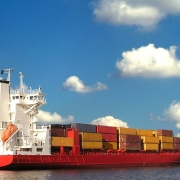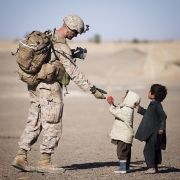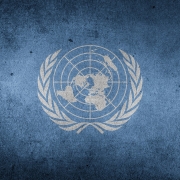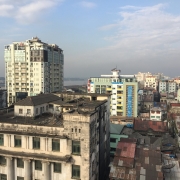How did ASEAN promote economic growth?
Topic of Study [For H2 History Students]:
Paper 2: Regional Conflicts and Co-operation
Source Based Case Study
Theme III Chapter 2: ASEAN (Growth and Development of ASEAN : Building regional peace and security)
Origins of regional economic cooperation
ASEAN was formed as a regional organization with many aims. One of such aims included the desire for economic progress.
To accelerate the economic growth, social progress and cultural development in the region through joint endeavours in the spirit of equality and partnership in order to strengthen the foundation for a prosperous and peaceful community of South-East Asian Nations.
The ASEAN (Bangkok) Declaration, 8 August 1967
In view of this declaration, ASEAN member states continued to pursue economic development, especially countries like Singapore.
Initial steps for economic cooperation: ASEAN Concord
On 24 February 1976, ASEAN members gathered and signed the ASEAN Concord at Bali, Indonesia. Within the agreement, member states intensified their efforts.
Member states shall progress towards the establishment of preferential trading arrangements (PTA) as a long term objective on a basis deemed to be at any particular time appropriate through rounds of negotiations subject to the unanimous agreement of member states.
The expansion of trade among member states shall be facilitated through cooperation on basic commodities, particularly in food and energy and through cooperation in ASEAN industrial projects (AIP).
ASEAN Concord, 26 February 1976
Evidently, two forms of economic cooperation emerged: namely the PTAs and the AIPs.
Approach #1: Preferential Trading Arrangements [PTAs]
On 24 February 1977, the agreement on ASEAN PTAs was adopted in Manila, Philippines. In principle, the PTA aimed to encourage intra-ASEAN trade via tariff reductions. For instance, tariff rates had to be lowered by 10%. More importantly, each member state has to indicate which product should be considered for tariff reduction.
RECALLING the Declaration of ASEAN Concord signed in Bali, Indonesia on 24 February 1976, which provides that Member States shall take cooperative action in their national and regional development programmes, utilizing as far as possible the resources available in the ASEAN region to broaden the complementarity of their respective economies.
Agreement on ASEAN Preferential Trading Arrangements, 24 February 1977
Approach #2: ASEAN Industrial Projects [AIPs]
On 6 March 1980, the agreement on AIPs was signed in Kuala Lumpur, Malaysia. The AIPs aimed to encourage large-scale economic projects among member states that allow the flow of investment between project partners. Similar to the PTAs, these projects had tariff reductions. For example, Indonesia and Malaysia engaged in a project that focused on urea.
Considering that the establishment of ASEAN Industrial Projects, through joint endeavours in the spirit of equality and partnership, can contribute to the acceleration of economic growth in the region.
To give priority to projects which utilize the available resources in the Member States and which contribute to the increase in food production and foreign exchange earnings or which save foreign exchange and create employment.
Basic Agreement on the ASEAN Industrial Projects, 6 March 1980
Approach #3: ASEAN Industrial Complementation [AICs]
On 18 June 1981, ASEAN members signed the agreement on AICs at Manila, Philippines. The AIC focused on resource-pooling and intra-ASEAN trade. It can be considered a continuation of the AIP that encountered setbacks.
The AIC was carried out via vertical integration. The ideal process was the involve each ASEAN member in one stage of production. For example, the “ASEAN Car” was conceptualised as the initial project. Each stage of the car production was carried out in a different country. By doing so, every member state would gain from the economic cooperation.
An ASEAN Industrial Complementation (AIC) product shall be an industrial product manufactured or to be manufactured in an ASEAN member country and allocated to that particular country as its participation in the AIC package. The product thus produced shall be entitled to enjoy the privileges herein provided for products in an AIC package.
Basic Agreement On ASEAN Industrial Complementation, 18 June 1981
Approach #4: ASEAN Industrial Joint Ventures [AIJVs]
On 8 November 1983, ASEAN signed the agreement on AIJVs at Jakarta, Indonesia. This approach involved private investors and at a smaller scale. To enhance flexibility and encourage closer cooperation, only two member countries were involved. The AIJVs also focused on tariff reductions, in which governments could enjoy up to 90% concessions.
ASEAN member countries shall examine such tentative list and indicate to COIME at a subsequent meeting, the products in which they would like to participate and declare any existing production facilities they have for such products. Those products for which at least two ASEAN member countries have indicated their intention to participate shall be included in the final list of AIJV products, showing the participating member countries.
Basic Agreement On ASEAN Industrial Joint Ventures, 7 November 1983
Approach #5: ASEAN Free Trade Area [AFTA]
On 28 January 1992, the member states of ASEAN signed the AFTA in Singapore. The AFTA marked a significant turning point for regional economic cooperation.
ASEAN shall establish the ASEAN Free Trade Area using the Common Effective Preferential Tariff (CEPT) Scheme as the main mechanism within a time frame of 15 years beginning 1 January 1993 with the ultimate effective tariffs ranging from 0% to 5%.
Directions in ASEAN Economic Cooperation, The Singapore Declaration, 28 January 1992
The AFTA functioned on the basis of the CEPT scheme. Additionally, member countries could add specific products deemed important in their national interests in the ‘exclusion list’. Such products would not be subjected to tariff reductions. Notably, the AFTA proved useful as intra-regional trade rose by more than US$53 billion by 2000.
What can we learn from this article?
Consider the following question:
– Assess the significance of ASEAN economic cooperation from 1967 to 2000 [to be discussed in class].
After examining the main approaches of ASEAN economic cooperation, you should apply your newfound knowledge to source-based case study questions (SBCS) to review your knowledge comprehension. Additionally, you can consider joining our JC History Tuition as we refine your answering techniques, such as information extraction, set arrangement and provenance analysis.
The H2 and H1 History Tuition feature online discussion and writing practices to enhance your knowledge application skills. Get useful study notes and clarify your doubts on the subject with the tutor. You can also follow our Telegram Channel to get useful updates.
We have other JC tuition classes, such as JC Math Tuition and JC Chemistry Tuition. For Secondary Tuition, we provide Secondary English Tuition, Secondary Math tuition, Secondary Chemistry Tuition, Social Studies Tuition, Geography, History Tuition and Secondary Economics Tuition. For Primary Tuition, we have Primary English, Math and Science Tuition. Call 9658 5789 to find out more.










